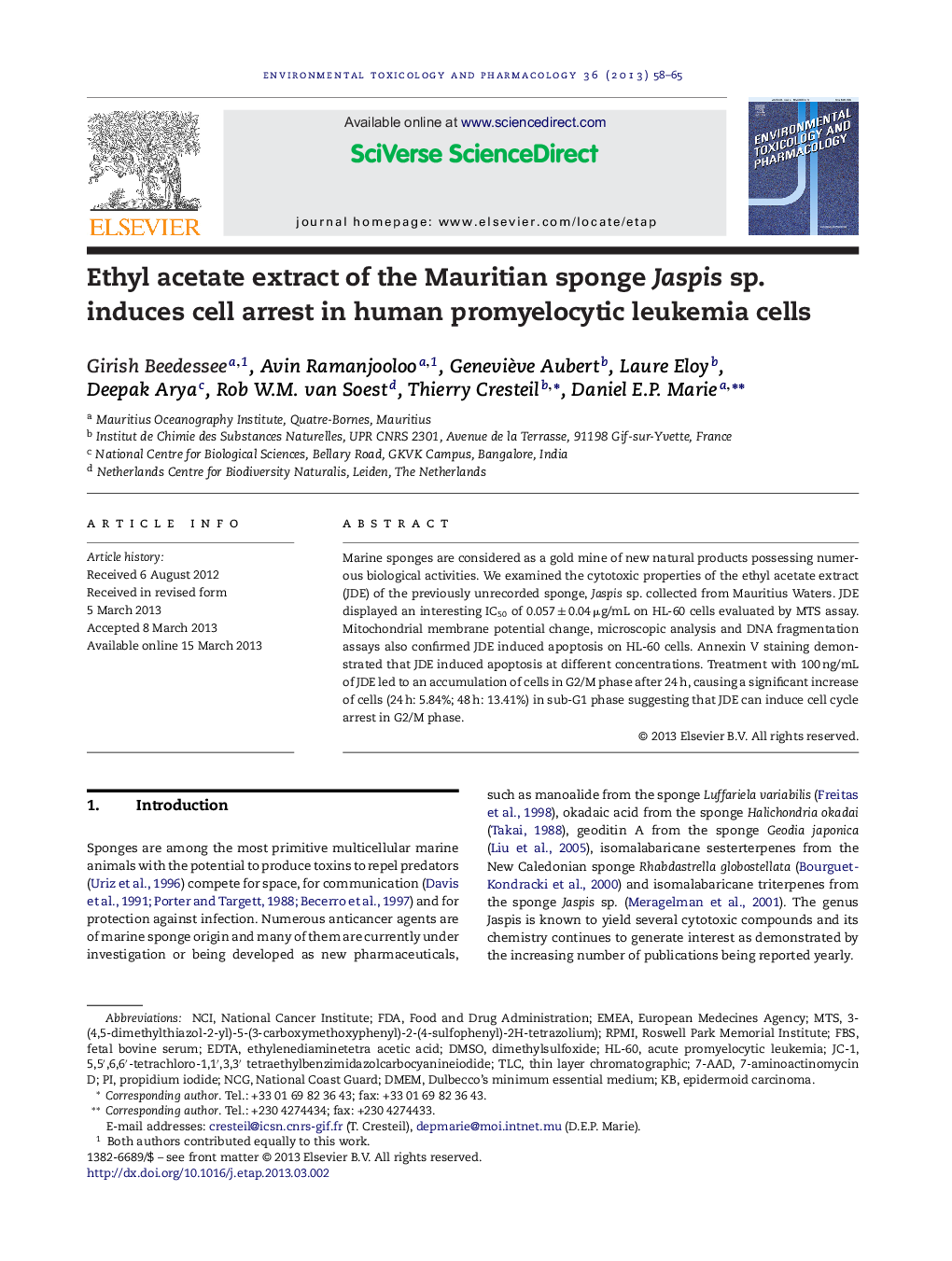| Article ID | Journal | Published Year | Pages | File Type |
|---|---|---|---|---|
| 2583036 | Environmental Toxicology and Pharmacology | 2013 | 8 Pages |
•Extract of sponge Jaspis sp. shows an IC50 of 0.057 ± 0.04 μg/mL on HL-60 cells.•Molecular mechanisms of action reveal distinct features of apoptosis.•Extract induces G2/M phase cell cycle arrest in HL-60 cells.•Ethyl acetate fraction of sponge Jaspis sp. may provide pharmaceutical leads.
Marine sponges are considered as a gold mine of new natural products possessing numerous biological activities. We examined the cytotoxic properties of the ethyl acetate extract (JDE) of the previously unrecorded sponge, Jaspis sp. collected from Mauritius Waters. JDE displayed an interesting IC50 of 0.057 ± 0.04 μg/mL on HL-60 cells evaluated by MTS assay. Mitochondrial membrane potential change, microscopic analysis and DNA fragmentation assays also confirmed JDE induced apoptosis on HL-60 cells. Annexin V staining demonstrated that JDE induced apoptosis at different concentrations. Treatment with 100 ng/mL of JDE led to an accumulation of cells in G2/M phase after 24 h, causing a significant increase of cells (24 h: 5.84%; 48 h: 13.41%) in sub-G1 phase suggesting that JDE can induce cell cycle arrest in G2/M phase.
